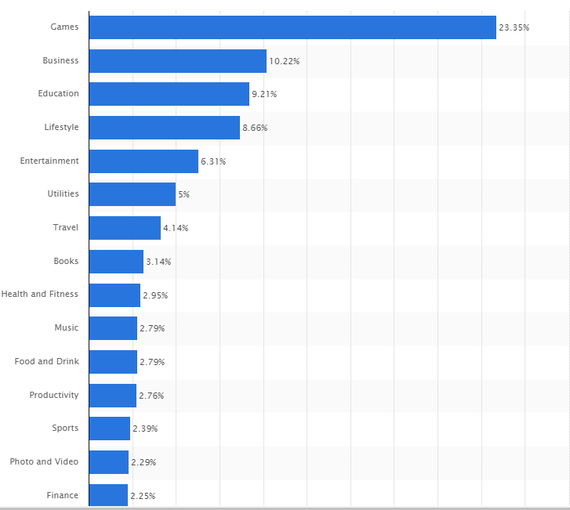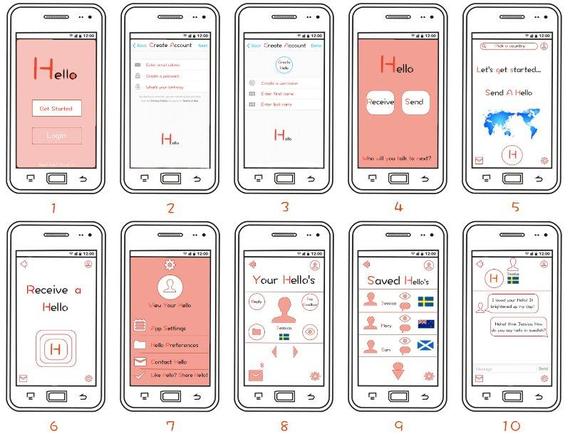So, an idea for an app has just hit you. You are pumped up and so sure it will be a winning app and create buzz across the web. Maybe it's for a game or an easy way for kids to memorize their multiplication facts.
Lots of people have had these ideas and turned them into apps that have made them a lot of money. A young Vietnamese developer, Dong Nguyen, developed a game app called "Flappy Bird," an idea he got from the infamous "Angry Birds." It went viral and within a couple of months he was a millionaire.
This, of course, is the exception rather than the rule. Most app popularity grows gradually. But still, if you have an idea, and would love to turn it into an app, here is a step-by-step guide that will help you take it from that to a product in the app store.
Step 1: Validate the Idea
There are two types of apps - those that improve on existing apps in some way and those that are based upon a brand new and unique concept. Consider, for example, that there are hundreds of calendar apps. If you have an idea to make a better one, search the existing apps and make sure your idea will really provide some additional value. All apps are placed into categories in the stores, and here is a breakdown of the popularity of apps in each category based upon downloads:
See where calendar falls under? Productivity! And productivity accounts for only 2.76% of total downloads. So if you're truly looking to build a calendar app, yours will have to be very unique to have a chance to thrive and be profitable in that niche.
Be sure that you are very clear about the purpose for your app, what it will do, and who will want it?
Step 2: Draw up a Sketch
You don't have to be an artist - far from it. But you do need to get out paper and pencil and sketch out the important features. You have to have a visual idea of your layout and structure for ultimate design and development, and to make sure that you have thought of everything that should be included.
Step 3: Do Your Research
Before you put time and money into developing an app, you really have to think of it as a business of sorts, and your research should answer some important questions:
•Are there other apps doing the same thing?
If so, is yours different? How? There are more than a million apps out there, but don't get discouraged. Go to the category best suited for your idea and take a look. What do they do that you can do better? What mistakes or problems do you see in them? If you can find some of these things, you can make sure that your app will be an improvement.
•Do you have a customer base?
You will need to develop a demographic of a typical customer and determine how large that base is - the larger the better. How many people are buying the current apps in your category? If you have developed a good customer profile, you will be able to find out how large that demographic is and what they want.
•How are apps marketed and monetized?
You will need a marketing campaign, so research how others are marketing theirs. Certainly, you will find that they are using social media to strategically market their app. They have found where their demographics hang out online and establish a presence there. You will need to do the same. Other app owners monetize by giving the basic download for free and then offering a premium version for a fee; still others sell advertising on their apps. Figure out what model you'll like to start with and scale up from there.
Step 4: Time to Bring in the Developer
If you have made it through the first three steps and are still enthusiastic, great! Now the app must actually be developed. If you have the design and coding skills, get to work. Most do not, however, and must turn to designers/developers for this phase. As you consider developers, ask the right questions.
•How long have they been in the business, especially in the niche of developing mobile apps?
•Can they show you samples of successful apps they have developed?
•How will they keep you in the loop as the design/development progresses?
•Of course, how much will they charge?
Price is not as important as finding the right partner for the job - a responsible app development company with a track record for success. You need to have the assurance that your developer shares your vision, listens to you, and consults with you throughout the entire process.
Step 5: Wireframing and Storyboard
This is the process of getting your ideas and elements in a clear format. You will need a prototype (i.e., a mockup) of the app.
If you are developing your own prototype, there are several good tools online, such as Balsamiq, HotGloo, or Moqups. All three of these will let you drag and drop your elements and graphics and also add buttons to click through and review it.
If you are using a developer, you should see a prototype pretty quickly, along with a storyboard that shows the connections between screens and overview of the functionalities.
Step 7: The Real Proof - Testing
Once that prototype is finished, it's time to test it. Get family, trusted friends and potential customers to test it - they will be more objective and can point out any flaws and hopefully give honest feedback.
Step 8: Sign Up for Accounts at App Marketplaces
Don't wait till the last minute - approval may take several days.
Step 9: Develop the "Skins" and Test Again
These are the actual high-resolution screens that form the actual app. Once finished, they must be tested again. There are testing apps for this stage, and your developer will use the best ones. If you are doing this, check out TestFlight.
Step 10: Release
Google app store will not have a waiting period for review, but Apple will need to approve it - again, it takes several days, unless you have submitted it through PreApps for pre-approval then you can release your app to your audience.
Step 11: Market, Maintain, and Monetize
Your friends and family know you have an app - the world does not. To market your own app, you will need a social media presence where your demographic resides. Pay per click (PPC) advertising can help; guest posting on related blogs will help drive traffic, send the app to reviewers and hope they will write a positive one. You don't have to start from scratch - use the marketing strategies that others have successfully used.
It's important to remember that apps also need to be maintained in order to stay relevant in today's world. Maintaining means that you will add features, new elements and upgrades when necessary. You can also consider charging for add-ons or other premium features - popular apps bring in a lot of revenue through this strategy. (Be sure the purchase process is seamless). Paid advertising on your app is another revenue maker, especially if you can personalize it and avoid being disruptive.
These steps serve as a guideline to building an app even though there are other segments to it. You'll need to ensure that your app adds value to your target audience while also getting and retaining customers in the process.



